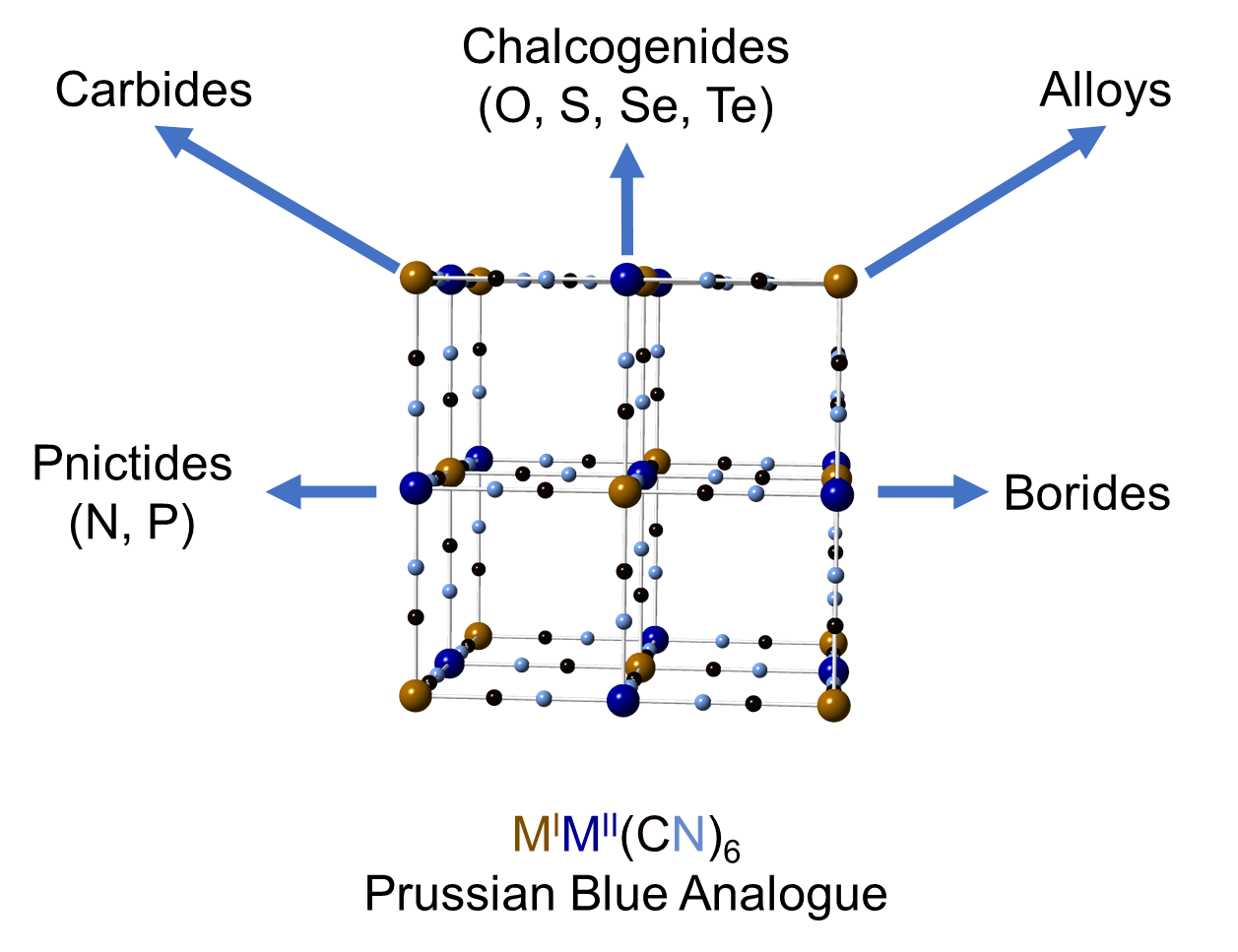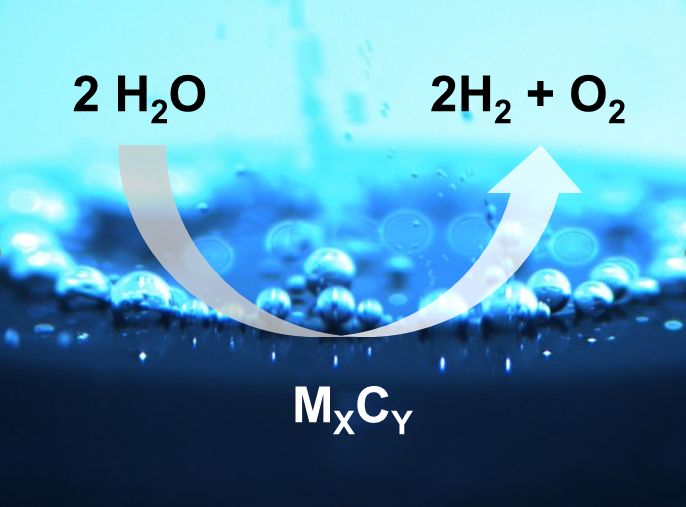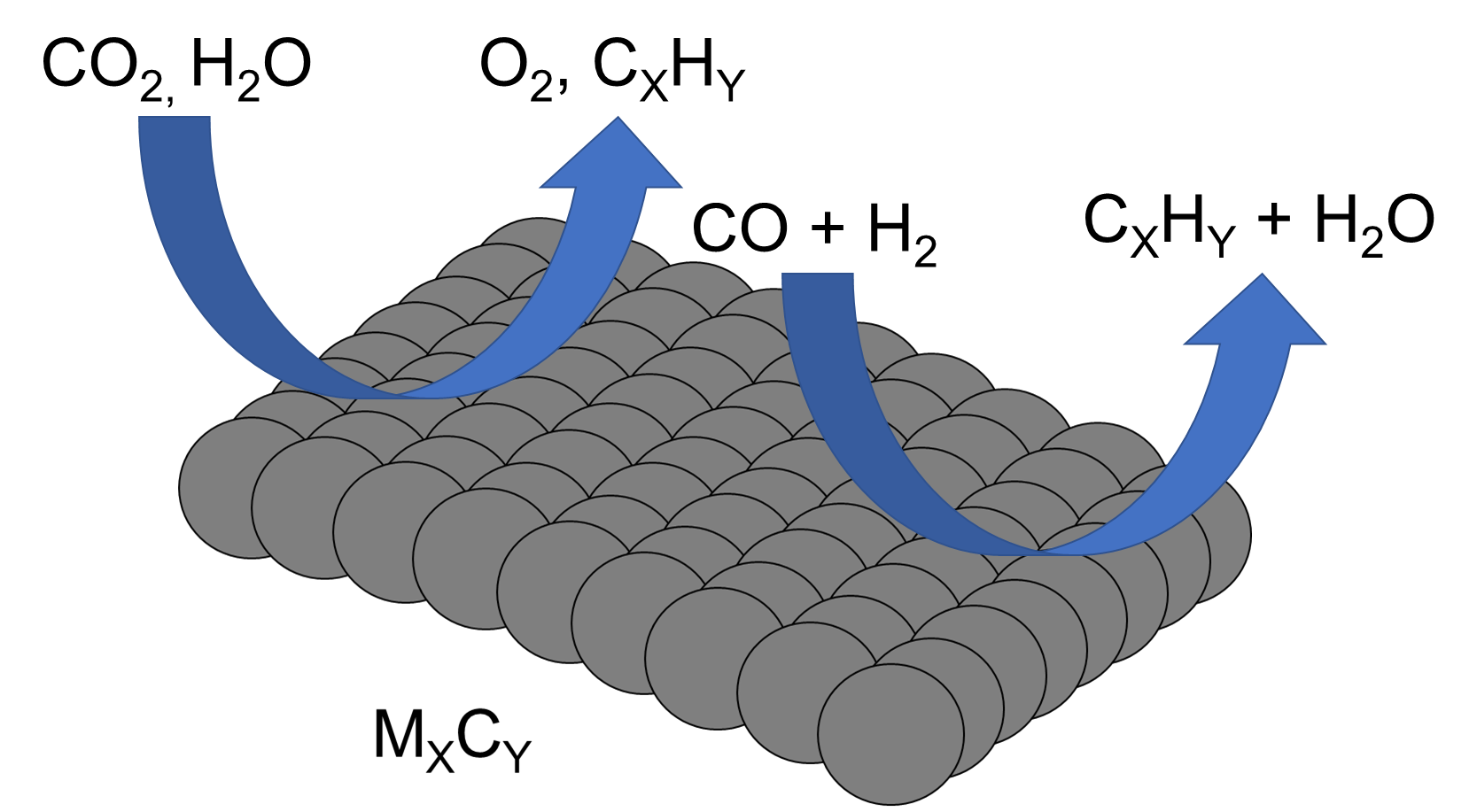Prussian Blue Analogues: Single Source precursor

Prussian blue (Iron Hexacyannoferrate, PB) has widely been used since the 1800's ranging from pigments in paintings, to staining for machinists, and even to treat heavy metal toxicity. Through changing the metals, Prussian blue analogues (PBAs) are studied as single molecule magnets, catalysts, and battery technology. The Strouse group has developed a synthetic pathway for top-down, templated growth of nanocrystals for magnetism, catalysis, and energy storage. Systemic design of the PBAs can direct the composition, phase, and size of the resultant nanocrystals. This templated design is scalable, non-toxic, and sustainable. Future work will combine the high throughput of the microwave with the rich permutation ability of the PBAs to create a synthetic library via combinatorial synthesis.
Catalysis: Electrocatalysis

M-Xides (M = TM, X = Carbides, Chalcogenides, Pnictides, Borides) are a family of pre-catalysts that have recently gained traction due to lower overpotentials and higher catalytic stabilities. Electrocatalysis (Hydrogen, Oxygen Evolution/Reduction) has renewed attention reflected by grand challenges outlined by the department of energy to generate cleaner sources of energy and for fuel cell design using non platinum group metals. Thus, development of earth abundant, first-row transition metal (TM) pre-catalysts is of great importance. The metal carbide (MXCY) family is particularly interesting due to high natural abundance, increased stability, and facile carbon migration due to their rich phase diagrams. (Image from the Lazenby Group)
Catalysis: CO2 Reduction, Water Gas shift, Fischer Tropsch Synthesis

Fossil fuels are energy dense fuels, but suffer from heavy contamination. Synthesis of biodiesels and olefins have been explored since the 1940's. However, synthesis of iron carbides (Fe7C3, Fe5C2, Fe3C1, Fe2C1) often requires high temperatures, pressures, or a mixture of the two. Additionally, dependent on the reaction (CO2 reduction, WGS, or FTS) different carbides are favorable for each reaction. Through the incorporation of alloying elements into iron, the Strouse group is working on a synthetic pathway using PBAs to control the phase and composition of the nanocarbides, while taking advantage of the scalability of the PBA templated growth mechanism.
Back to Research